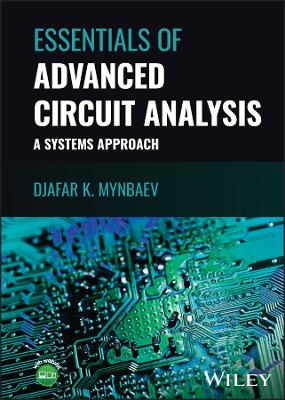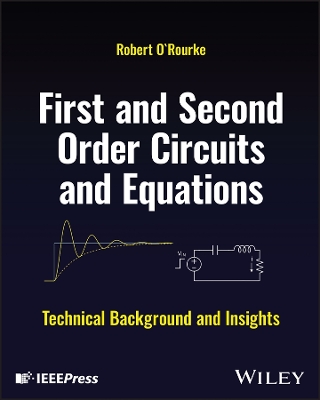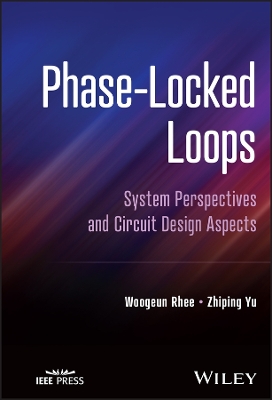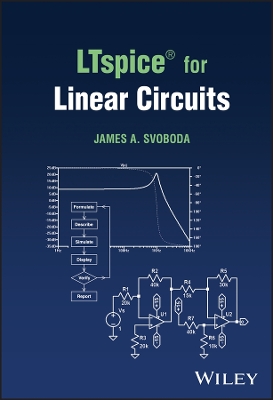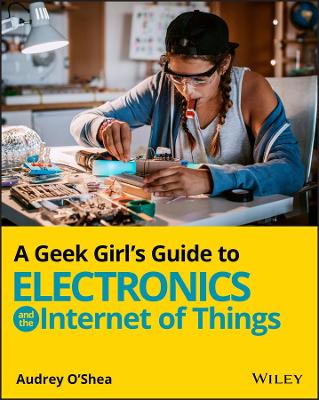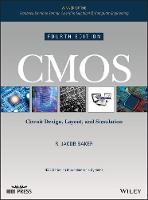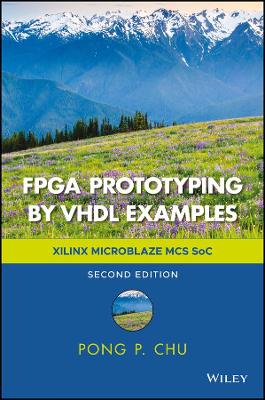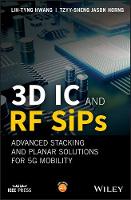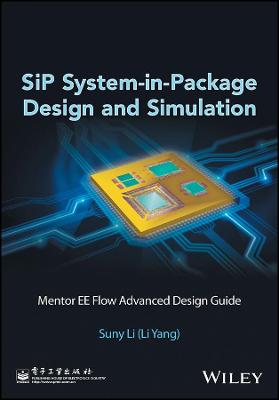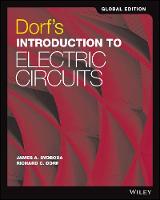Liquid Crystal Displays
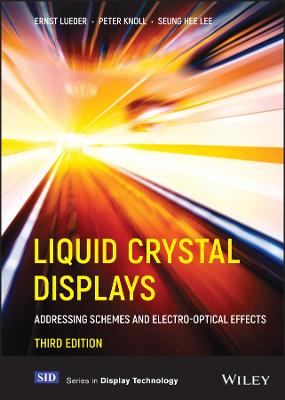 -15%
portes grátis
-15%
portes grátis
Liquid Crystal Displays
Addressing Schemes and Electro-Optical Effects
Lueder, Ernst; Lee, Seung Hee; Knoll, Peter
John Wiley & Sons Inc
04/2022
640
Dura
Inglês
9781119667919
15 a 20 dias
1226
Foreword to the Second Edition
Preface to the Third Edition
Preface to the Second Edition
Preface to the First Edition
About the Authors
1 Introduction 1
2 Liquid Crystal Materials and Liquid Crystal Cells 3
2.1 Properties of Liquid Crystals 3
2.1.1 Shape and phases of liquid crystals 3
2.1.2 Material properties of anisotropic liquid crystals 6
2.2 The Operation of a Twisted Nematic LCD 11
2.2.1 The electro-optical effects in transmissive twisted nematic LC cells 11
2.2.2 The addressing of LCDs by TFTs 18
3 Electro-optic Effects in Untwisted Nematic Liquid Crystals 21
3.1 The Planar and Harmonic Wave of Light 21
3.2 Propagation of Polarized Light in Birefringent Untwisted Nematic Liquid Crystal Cells 26
3.2.1 The propagation of light in a Fre?edericksz cell 26
3.2.2 The transmissive Fre?edericksz cell 31
3.2.3 The reflective Fre?edericksz cell 37
3.2.4 The Fre?edericksz cell as a phase-only modulator 39
3.2.5 The DAP cell or the vertically aligned cell 42
3.2.6 The HAN cell 44
3.2.7 The p cell 46
3.2.8 Switching dynamics of untwisted nematic LCDs 48
3.2.9 Fast blue phase liquid crystals 54
4 Electro-optic Effects in Twisted Nematic Liquid Crystals 57
4.1 The Propagation of Polarized Light in Twisted Nematic Liquid Crystal Cells 57
COPYRIGHTED MATERIAL
4.2 The Various Types of TN Cells 67
4.2.1 The regular TN cell 67
4.2.2 The supertwisted nematic LC cell (STN-LCD) 70
4.2.3 The mixed mode twisted nematic cell (MTN cell) 74
4.2.4 Reflective TN cells 76
4.3 Electronically Controlled Birefringence for the Generation of Colour 80
5 Descriptions of Polarization 83
5.1 The Characterizations of Polarization 83
5.2 A Differential Equation for the Propagation of Polarized Light through Anisotropic Media 91
5.3 Special Cases for Propagation of Light 95
5.3.1 Incidence of linearly polarized light 95
5.3.2 Incident light is circularly polarized 97
6 Propagation of Light with an Arbitrary Incident Angle through Anisotropic Media 99
6.1 Basic Equations for the Propagation of Light 99
6.2 Enhancement of the Performance of LC Cells 107
6.2.1 The degradation of picture quality 107
6.2.2 Optical compensation foils for the enhancement of picture quality 109
6.2.2.1 The enhancement of contrast 109
6.2.2.2 Compensation foils for LC molecules with different optical axis 110
6.2.3 Suppression of grey shade inversion and the preservation of grey shade stability 115
6.2.4 Fabrication of compensation foils 116
6.3 Electro-optic Effects with Wide Viewing Angle 116
6.3.1 Multidomain pixels 116
6.3.2 In-plane switching 117
6.3.3 Optically compensated bend cells 119
6.4 Multidomain VA Cells, Especially for TV 121
6.4.1 The torque generated by an electric field 122
6.4.2 The requirements for a VA display, especially for TV 124
6.4.2.1 The speeds of operation 124
6.4.2.2 Colour shift, change in contrast and image sticking 124
6.4.3 VA cells for TV applications 129
6.4.3.1 Multidomain VA cells with protrusions (MVAs) 129
6.4.3.2 Patterned VA cells (PVAs) 130
6.4.3.3 PVA cells with two subpixels (CS-S-PVAs) 132
6.4.3.4 Cell technologies avoiding a delayed optical response 136
- Polymer sustained alignment (PSA) 136
- Mountain shaped cell surface 137
6.4.3.5 The continuous pinwheel alignment (CPA) 139
6.5 Polarizers with Increased Luminous Output 140
6.5.1 A reflective linear polarizer 140
6.5.2 A reflective polarizer working with circularly polarized light 141
6.6 Two Non-birefringent Foils 142
7 Modified Nematic Liquid Crystal Displays 145
7.1 Polymer Dispersed LCDs (PDLCDs) 145
7.1.1 The operation of a PDLCD 145
7.1.2 Applications of PDLCDs 149
7.2 Guest-Host Displays 150
7.2.1 The operation of Guest-Host Displays 150
7.2.2 Reflective Guest-Host Displays 154
8 Bistable Liquid Crystal Displays 159
8.1 Ferroelectric Liquid Crystal Displays (FLCDs) 159
8.2 Chiral Nematic Liquid Crystal Displays 168
8.3 Bistable Nematic Liquid Crystal Displays 174
8.3.1 Bistable twist cells 174
8.3.2 Grating aligned nematic devices 175
8.3.3 Monostable surface anchoring switching 177
9 Continuously Light Modulating Ferroelectric Displays 179
9.1 Deformed Helix Ferroelectric Devices 179
9.2 Antiferroelectric LCDs 181
10 Addressing Schemes for Liquid Crystal Displays 185
11 Direct Addressing 189
12 Passive Matrix Addressing of TN Displays 191
12.1 The Basic Addressing Scheme and the Law of Alt and Pleshko 191
12.2 Implementation of PM Addressing 196
12.3 Multiple Line Addressing 201
12.3.1 The basic equations 201
12.3.2 Waveforms for the row selection 203
12.3.3 Column voltage for MLA 205
12.3.4 Implementation of multi-line addressing 206
12.3.5 Modified PM addressing of STN cells 210
12.3.5.1 Decreased levels of addressing voltages 210
12.3.5.2 Contrast and grey shades for MLA 212
12.4 Two Frequency Driving of PMLCDs 218
13 Passive Matrix Addressing of Bistable Displays 223
13.1 Addressing of Ferroelectric LCDs 223
13.1.1 The V-tmin addressing scheme 225
13.1.2 The V-1/t addressing scheme 226
13.1.3 Reducing crosstalk in FLCDs 228
13.1.4 Ionic effects during addressing 228
13.2 Addressing of Chiral Nematic Liquid Crystal Displays 231
14 Addressing of Liquid Crystal Displays with a-Si Thin Film Transistors (a-Si-TFTs) 239
14.1 Properties of a-Si Thin Film Transistors 239
14.2 Static Operation of TFTs in an LCD 244
14.3 The Dynamics of Switching by TFTs 252
14.4 Bias-Temperature Stress Test of TFTs 259
14.5 Drivers for AMLCDs 260
14.6 The Entire Addressing System 266
14.7 Layouts of Pixels with TFT Switches 269
14.8 Fabrication Processes of a-Si TFTs 272
14.9 Addressing of VA Displays 277
14.9.1 Overshoot and undershoot driving of LCDs 277
14.9.2 The dynamic capacitance compensation (DCC) 281
14.9.3 Fringe field accelerated decay of luminance 288
14.9.4 The addressing of two subpixels 292
14.9.5 Biased vertical alignment (BVA) 295
14.10 Motion Blur 298
14.10.1 Causes, characterization and remedies of blur 298
14.10.2 Systems with decreased blur 310
14.10.2.1 Edge enhancement for reduced blur 310
14.10.2.2 Black insertion techniques 312
14.10.2.3 Scanning backlights 313
14.10.2.4 Higher frame rates for reducing blur 315
14.10.3 Modelling of blur 320
14.11 The Optical Response of a VA Cell 329
14.12 Reduction of the Optical Response Time by a Special Addressing Waveform 334
15 Addressing of LCDs with Poly-Si TFTs 339
15.1 Fabrication Steps for Top- and Bottom-Gate Poly-Si TFTs 340
15.2 Laser Crystallization by Scanning or Large Area Anneal 344
15.3 Lightly Doped Drains for Poly-Si TFTs 345
15.4 The Kink Effect and its Suppression 347
15.5 Circuits with Poly-Si TFTs 349
16 Liquid Crystal on Silicon Displays 353
16.1 Fabrication of LCOS with DRAM-Type Analog Addressing 353
16.2 SRAM-Type Digital Addressing of LCOS 355
16.3 Microdisplays Using LCOS Technology 360
17 Addressing of Liquid Crystal Displays with Metal-Insulator-Metal Pixel Switches 363
18 Addressing of LCDs with Two-Terminal Devices and Optical, Plasma, Laser and e-beam Techniques 373
19 Components of LCD Cells 381
19.1 Additive Colours Generated by Absorptive Photosensitive Pigmented Colour Filters 381
19.2 Additive and Subtractive Colours Generated by Reflective Dichroic Colour Filters 383
19.3 Colour Generation by Three Stacked Displays 385
19.4 LED Backlights 386
19.4.1 The advantages of LEDs as backlights 386
19.4.2 LED technology 386
19.4.3 Optics for LED backlights 395
19.4.4 Special applications for LED backlights 405
19.4.4.1 Saving power and realizing scanning with LED backlights 405
19.4.4.2 Field sequential displays with LED backlights 407
19.4.4.3 Active matrix addressed LED backlights 409
19.4.5 The electronic addressing of LEDs 409
19.5 Cell Assembly 411
20 Projectors with Liquid Crystal Light Valves 415
20.1 Single Transmissive Light Valve Systems 415
20.1.1 The basic single light valve system 415
20.1.2 The field sequential colour projector 416
20.1.3 A single panel scrolling projector 417
20.1.4 Single light valve projector with angular colour separation 418
20.1.5 Single light valve projectors with a colour grating 418
20.2 Systems with Three Light Valves 420
20.2.1 Projectors with three transmissive light valves 420
20.2.2 Projectors with three reflective light valves 421
20.2.3 Projectors with three LCOS light valves 422
20.3 Projectors with Two LC Light Valves 422
20.4 A Rear Projector with One or Three Light Valves 422
20.5 A Projector with Three Optically Addressed Light Valves 423
21 Liquid Crystal Displays with Plastic Substrates 427
21.1 Advantages of Plastic Substrates 427
21.2 Plastic Substrates and their Properties 428
21.3 Barrier Layers for Plastic Substrates 429
21.4 Thermo-Mechanical Problems with Plastics 430
21.5 Fabrication of TFTs and MIMs at Low Process Temperatures 435
21.5.1 Fabrication of a-Si:H TFTs at low temperature 435
21.5.2 Fabrication of low temperature poly-Si TFTs 435
21.5.3 Fabrication of MIMs at low temperature 437
21.5.4 Conductors and transparent electrodes for plastic substrates 438
21.6 Transfer of High Temperature Fabricated AMLCDs to a Flexible Substrate 438
22 Printing of Layers for LC Cells 443
22.1 Printing Technologies 443
22.1.1 Flexographic printing 443
22.1.2 Knife coating 444
22.1.3 Ink-jet printing 444
22.1.4 Silk screen printing 448
22.2 Surface Properties for Printing 449
22.3 Printing of Components for Displays 455
22.3.1 Ink-jet printed colour filters, alignment layers and phosphors for LED Backlights 455
22.3.2 Flexographic printing of alignment layers and of nematic liquid crystals 456
22.3.3 Printing of OTFTs 457
22.4 Cell Building by Lamination 461
23 Advances in TFTs and Structures for Enhancing Mobility
24 Fringe-Field Switching (FFS) Technologies
25 Automotive Applications of Liquid Crystal Displays
Appendix 1: Formats of Flat Panel Displays 463
Appendix 2: Optical Units of Displays 465
Appendix 3: Properties of Polarized Light 467
References 473
Index
Foreword to the Second Edition
Preface to the Third Edition
Preface to the Second Edition
Preface to the First Edition
About the Authors
1 Introduction 1
2 Liquid Crystal Materials and Liquid Crystal Cells 3
2.1 Properties of Liquid Crystals 3
2.1.1 Shape and phases of liquid crystals 3
2.1.2 Material properties of anisotropic liquid crystals 6
2.2 The Operation of a Twisted Nematic LCD 11
2.2.1 The electro-optical effects in transmissive twisted nematic LC cells 11
2.2.2 The addressing of LCDs by TFTs 18
3 Electro-optic Effects in Untwisted Nematic Liquid Crystals 21
3.1 The Planar and Harmonic Wave of Light 21
3.2 Propagation of Polarized Light in Birefringent Untwisted Nematic Liquid Crystal Cells 26
3.2.1 The propagation of light in a Fre?edericksz cell 26
3.2.2 The transmissive Fre?edericksz cell 31
3.2.3 The reflective Fre?edericksz cell 37
3.2.4 The Fre?edericksz cell as a phase-only modulator 39
3.2.5 The DAP cell or the vertically aligned cell 42
3.2.6 The HAN cell 44
3.2.7 The p cell 46
3.2.8 Switching dynamics of untwisted nematic LCDs 48
3.2.9 Fast blue phase liquid crystals 54
4 Electro-optic Effects in Twisted Nematic Liquid Crystals 57
4.1 The Propagation of Polarized Light in Twisted Nematic Liquid Crystal Cells 57
COPYRIGHTED MATERIAL
4.2 The Various Types of TN Cells 67
4.2.1 The regular TN cell 67
4.2.2 The supertwisted nematic LC cell (STN-LCD) 70
4.2.3 The mixed mode twisted nematic cell (MTN cell) 74
4.2.4 Reflective TN cells 76
4.3 Electronically Controlled Birefringence for the Generation of Colour 80
5 Descriptions of Polarization 83
5.1 The Characterizations of Polarization 83
5.2 A Differential Equation for the Propagation of Polarized Light through Anisotropic Media 91
5.3 Special Cases for Propagation of Light 95
5.3.1 Incidence of linearly polarized light 95
5.3.2 Incident light is circularly polarized 97
6 Propagation of Light with an Arbitrary Incident Angle through Anisotropic Media 99
6.1 Basic Equations for the Propagation of Light 99
6.2 Enhancement of the Performance of LC Cells 107
6.2.1 The degradation of picture quality 107
6.2.2 Optical compensation foils for the enhancement of picture quality 109
6.2.2.1 The enhancement of contrast 109
6.2.2.2 Compensation foils for LC molecules with different optical axis 110
6.2.3 Suppression of grey shade inversion and the preservation of grey shade stability 115
6.2.4 Fabrication of compensation foils 116
6.3 Electro-optic Effects with Wide Viewing Angle 116
6.3.1 Multidomain pixels 116
6.3.2 In-plane switching 117
6.3.3 Optically compensated bend cells 119
6.4 Multidomain VA Cells, Especially for TV 121
6.4.1 The torque generated by an electric field 122
6.4.2 The requirements for a VA display, especially for TV 124
6.4.2.1 The speeds of operation 124
6.4.2.2 Colour shift, change in contrast and image sticking 124
6.4.3 VA cells for TV applications 129
6.4.3.1 Multidomain VA cells with protrusions (MVAs) 129
6.4.3.2 Patterned VA cells (PVAs) 130
6.4.3.3 PVA cells with two subpixels (CS-S-PVAs) 132
6.4.3.4 Cell technologies avoiding a delayed optical response 136
- Polymer sustained alignment (PSA) 136
- Mountain shaped cell surface 137
6.4.3.5 The continuous pinwheel alignment (CPA) 139
6.5 Polarizers with Increased Luminous Output 140
6.5.1 A reflective linear polarizer 140
6.5.2 A reflective polarizer working with circularly polarized light 141
6.6 Two Non-birefringent Foils 142
7 Modified Nematic Liquid Crystal Displays 145
7.1 Polymer Dispersed LCDs (PDLCDs) 145
7.1.1 The operation of a PDLCD 145
7.1.2 Applications of PDLCDs 149
7.2 Guest-Host Displays 150
7.2.1 The operation of Guest-Host Displays 150
7.2.2 Reflective Guest-Host Displays 154
8 Bistable Liquid Crystal Displays 159
8.1 Ferroelectric Liquid Crystal Displays (FLCDs) 159
8.2 Chiral Nematic Liquid Crystal Displays 168
8.3 Bistable Nematic Liquid Crystal Displays 174
8.3.1 Bistable twist cells 174
8.3.2 Grating aligned nematic devices 175
8.3.3 Monostable surface anchoring switching 177
9 Continuously Light Modulating Ferroelectric Displays 179
9.1 Deformed Helix Ferroelectric Devices 179
9.2 Antiferroelectric LCDs 181
10 Addressing Schemes for Liquid Crystal Displays 185
11 Direct Addressing 189
12 Passive Matrix Addressing of TN Displays 191
12.1 The Basic Addressing Scheme and the Law of Alt and Pleshko 191
12.2 Implementation of PM Addressing 196
12.3 Multiple Line Addressing 201
12.3.1 The basic equations 201
12.3.2 Waveforms for the row selection 203
12.3.3 Column voltage for MLA 205
12.3.4 Implementation of multi-line addressing 206
12.3.5 Modified PM addressing of STN cells 210
12.3.5.1 Decreased levels of addressing voltages 210
12.3.5.2 Contrast and grey shades for MLA 212
12.4 Two Frequency Driving of PMLCDs 218
13 Passive Matrix Addressing of Bistable Displays 223
13.1 Addressing of Ferroelectric LCDs 223
13.1.1 The V-tmin addressing scheme 225
13.1.2 The V-1/t addressing scheme 226
13.1.3 Reducing crosstalk in FLCDs 228
13.1.4 Ionic effects during addressing 228
13.2 Addressing of Chiral Nematic Liquid Crystal Displays 231
14 Addressing of Liquid Crystal Displays with a-Si Thin Film Transistors (a-Si-TFTs) 239
14.1 Properties of a-Si Thin Film Transistors 239
14.2 Static Operation of TFTs in an LCD 244
14.3 The Dynamics of Switching by TFTs 252
14.4 Bias-Temperature Stress Test of TFTs 259
14.5 Drivers for AMLCDs 260
14.6 The Entire Addressing System 266
14.7 Layouts of Pixels with TFT Switches 269
14.8 Fabrication Processes of a-Si TFTs 272
14.9 Addressing of VA Displays 277
14.9.1 Overshoot and undershoot driving of LCDs 277
14.9.2 The dynamic capacitance compensation (DCC) 281
14.9.3 Fringe field accelerated decay of luminance 288
14.9.4 The addressing of two subpixels 292
14.9.5 Biased vertical alignment (BVA) 295
14.10 Motion Blur 298
14.10.1 Causes, characterization and remedies of blur 298
14.10.2 Systems with decreased blur 310
14.10.2.1 Edge enhancement for reduced blur 310
14.10.2.2 Black insertion techniques 312
14.10.2.3 Scanning backlights 313
14.10.2.4 Higher frame rates for reducing blur 315
14.10.3 Modelling of blur 320
14.11 The Optical Response of a VA Cell 329
14.12 Reduction of the Optical Response Time by a Special Addressing Waveform 334
15 Addressing of LCDs with Poly-Si TFTs 339
15.1 Fabrication Steps for Top- and Bottom-Gate Poly-Si TFTs 340
15.2 Laser Crystallization by Scanning or Large Area Anneal 344
15.3 Lightly Doped Drains for Poly-Si TFTs 345
15.4 The Kink Effect and its Suppression 347
15.5 Circuits with Poly-Si TFTs 349
16 Liquid Crystal on Silicon Displays 353
16.1 Fabrication of LCOS with DRAM-Type Analog Addressing 353
16.2 SRAM-Type Digital Addressing of LCOS 355
16.3 Microdisplays Using LCOS Technology 360
17 Addressing of Liquid Crystal Displays with Metal-Insulator-Metal Pixel Switches 363
18 Addressing of LCDs with Two-Terminal Devices and Optical, Plasma, Laser and e-beam Techniques 373
19 Components of LCD Cells 381
19.1 Additive Colours Generated by Absorptive Photosensitive Pigmented Colour Filters 381
19.2 Additive and Subtractive Colours Generated by Reflective Dichroic Colour Filters 383
19.3 Colour Generation by Three Stacked Displays 385
19.4 LED Backlights 386
19.4.1 The advantages of LEDs as backlights 386
19.4.2 LED technology 386
19.4.3 Optics for LED backlights 395
19.4.4 Special applications for LED backlights 405
19.4.4.1 Saving power and realizing scanning with LED backlights 405
19.4.4.2 Field sequential displays with LED backlights 407
19.4.4.3 Active matrix addressed LED backlights 409
19.4.5 The electronic addressing of LEDs 409
19.5 Cell Assembly 411
20 Projectors with Liquid Crystal Light Valves 415
20.1 Single Transmissive Light Valve Systems 415
20.1.1 The basic single light valve system 415
20.1.2 The field sequential colour projector 416
20.1.3 A single panel scrolling projector 417
20.1.4 Single light valve projector with angular colour separation 418
20.1.5 Single light valve projectors with a colour grating 418
20.2 Systems with Three Light Valves 420
20.2.1 Projectors with three transmissive light valves 420
20.2.2 Projectors with three reflective light valves 421
20.2.3 Projectors with three LCOS light valves 422
20.3 Projectors with Two LC Light Valves 422
20.4 A Rear Projector with One or Three Light Valves 422
20.5 A Projector with Three Optically Addressed Light Valves 423
21 Liquid Crystal Displays with Plastic Substrates 427
21.1 Advantages of Plastic Substrates 427
21.2 Plastic Substrates and their Properties 428
21.3 Barrier Layers for Plastic Substrates 429
21.4 Thermo-Mechanical Problems with Plastics 430
21.5 Fabrication of TFTs and MIMs at Low Process Temperatures 435
21.5.1 Fabrication of a-Si:H TFTs at low temperature 435
21.5.2 Fabrication of low temperature poly-Si TFTs 435
21.5.3 Fabrication of MIMs at low temperature 437
21.5.4 Conductors and transparent electrodes for plastic substrates 438
21.6 Transfer of High Temperature Fabricated AMLCDs to a Flexible Substrate 438
22 Printing of Layers for LC Cells 443
22.1 Printing Technologies 443
22.1.1 Flexographic printing 443
22.1.2 Knife coating 444
22.1.3 Ink-jet printing 444
22.1.4 Silk screen printing 448
22.2 Surface Properties for Printing 449
22.3 Printing of Components for Displays 455
22.3.1 Ink-jet printed colour filters, alignment layers and phosphors for LED Backlights 455
22.3.2 Flexographic printing of alignment layers and of nematic liquid crystals 456
22.3.3 Printing of OTFTs 457
22.4 Cell Building by Lamination 461
23 Advances in TFTs and Structures for Enhancing Mobility
24 Fringe-Field Switching (FFS) Technologies
25 Automotive Applications of Liquid Crystal Displays
Appendix 1: Formats of Flat Panel Displays 463
Appendix 2: Optical Units of Displays 465
Appendix 3: Properties of Polarized Light 467
References 473
Index


